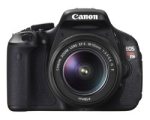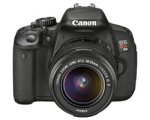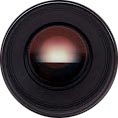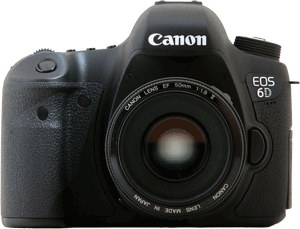Canon 600D vs 650D
When comparing the Canon 600D vs 650D the big question is this: is the 650D worth the extra expense?
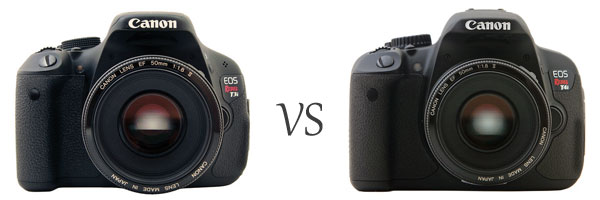
Both cameras have a lot to offer for beginning and intermediate photographers, and both share a great many features as we'll discover in a moment.
But Canon could not just release the 650D (T4i) with a different name and no significant improvements, so there are key areas where the 650D is considered "better" than its predecessor.
The 600D is also called the T3i while the 650D is called the T4i.
If one or more of these enhancements appeal to you, then the 650D T4i might very well be worth the additional cost.
But if you find yourself saying "ho hum" to many of the new features, then you can save some coin by opting for the 600D T3i. Heck, you can even put the money you save toward a second lens.
But I'm getting ahead of myself. Let's take a closer look a the Canon 600D vs 650D to see how these two cameras compare.
Side-by-Side Camera Features
Let's begin with the obvious: the list of features available on each camera. I've highlighted any column where there's a difference between the two cameras.
CANON 600D T3i |
CANON 650D T4i |
|
| Release Date | March 2011 | June 2012 |
|---|---|---|
| List Price (USD) | $ 650 (with 18-55mm lens) | $ 750 (with 18-55mm lens) |
| Megapixels | 18 | 18 |
| Stabilization | In Lens | In Lens |
| Memory Card | SD / SDHC / SDXC | SD / SDHC / SDXC |
| Max. Shutter Speed | 1/4000 | 1/4000 |
| Max. Photo Capture | 3.7 per second | 5 per second |
| ISO Range | 100 to 12800 | 100 to 25600 |
| Movie Modes | Quicktime MOV 1920 x 1080p (30, 25, 24fps) 1280 x 720p (60, 50fps) 640 x 480 (60, 50fps) | Quicktime MOV 1920 x 1080p (30, 25, 24fps) 1280 x 720p (60, 50fps) 640 x 480 (60, 50fps) |
| LCD | Flexible 3in (1,040,000 dots) | Flexible 3in Touch-Screen (1,040,000 dots) |
| Viewfinder | Pentamirror (95% coverage) | Pentamirror (95% coverage) |
| Autofocus | 9 point | 9 point |
| Face Detect AF | No | Yes |
| Sensor Dimensions | 22.3 x 14.9 (1.6x crop factor) | 22.3 x 14.9 (1.6x crop factor) |
| HDMI Port | Yes | Yes |
| Live View | Yes | Yes |
| Built-in Flash | Yes (Sync: 1/200) | Yes (Sync: 1/200) |
| Compatible Lenses | Canon EF and EF-S | Canon EF and EF-S |
| Dimensions | 5.1 x 3.9 x 2.9in 129 x 98 x 75mm | 5.24 x 3.9 x 3.1in 133 x 100 x 79mm |
| Weight | 18.7oz (530g) | 20.28oz (575g) |
So — the Canon T4i 650D is slightly bigger, somewhat heavier and just a bit faster. Does that merit the additional expense? Probably not — you have to look a bit deeper to see how these cameras are really different.
LCD Screen

Yes, the LCDs on both cameras flip out from the camera body and rotate for easy viewing at odd angles. Both LCD screens also have the same resolution (clarity and sharpness) thanks to their 1.04 million dots.
The main difference is that you can use touch control with one and not with the other.
The "big news" about the Canon 650D is that it's the first digital Rebel — and in fact the first digital SLR — to include a touch-sensitive LCD screen.
You can use the LCD touch control in 3 ways:
- To make changes to camera settings
- To select a specific autofocus point
- To review photos you've taken and zoom in/out on specific images
The extent to which you use the touch screen to change camera settings depends a LOT on how you'd use a camera without a touch screen.
If you'd prefer to put the camera in AUTO mode and not fiddle aorund with the settings all that much, then having access to them via touch control is not really a huge benefit.
However, if you're the type who wants to constantly adjust aperture, shutter speed, ISO, white balance and color tone for optimal image quality, then changing these settings via touch screen is intuitive and easy.
It's also exceptionally easy to select a specific focus point for an off-center subject. You can even touch a person's face on the LCD, and the Canon 650D will lock focus on the face and then track it as hte face moves across the LCD.
Finally, you can show off your pictures to friends and family by swiping your finger across the LCD and using pinch to zoom in for greater detail.
If you're a traditional SLR user, all this touching and tapping to adjust camera settings may feel odd — you may be happier with the more traditional dials and buttons available on the 600D.
If you've never used an SLR before in your life and don't spend a day without your iPhone, then the touch screen on the 650D will make perfect sense.
Continuous Shot Speed

As you can see from the table above, the continuous shot speed is slightly different between the Canon 600D vs 650D.
- The 650D is capable of 5 photos per second
- The 600D captures a bit under 4 per second
This particular difference is really only going to matter if you spend a LOT of time taking pictures of sports or fast-moving subjects.
It's not that the 600D is unresponsive — the 9 point autofocus is quite fast and in continuous mode you can capture some very fleeting moments. But the 650D is faster.
To capture the peak moment of action, the "one" shot that really captures the essence of a sport, sometimes you need this type of speed.
Access to Movie Mode
If you just want to shoot video all the time then you can put either camera in movie mode and record all you want.
But if you're like me, you'll want to shoot a short video when you're in the middle of taking pictures, and then go back to taking pictures again.
- On the 600D, you can ONLY activate movie mode by selecting it using the main mode dial on the top of the camera
- On the 650D, activating movie mode is as simple as flipping a switch
My problem with the Canon 600D is that the movie mode is on the opposite side of the mode dial from all the manual camera modes.
Say that I'm taking pictures in Aperture Priority (Av) mode and I want to take a video:
- First, I have to spin the mode dial all the way around from Av mode to movie mode
- Once in movie mode, I capture several seconds of video
- To go back to shooting stills, I have to spin the mode dial from movie mode back to Av mode
It's pretty tedious to switch back and forth from stills to video.
By contrast, you can leave the Canon 650D in any shooting mode you like when you activate movie mode. This means that when you turn movie mode off, you're immediately ready to shoot some more stills.
Movie Sound
I never really thought that the location of a built-in microphone was important until I compared the Canon 600D vs 650D.
- On the 600D, the microphone is located on the left side of the camera body, in a vertical position
- On the Canon 650D the stereo microphones sits on top of the camera in front of the
flash bracket (see below)
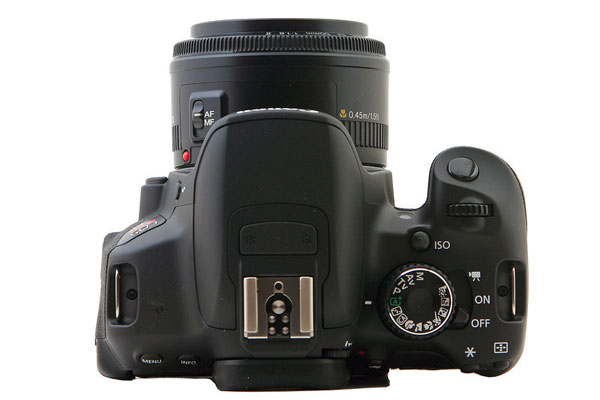
Why does the placement of the microphone make a difference? One word: wind.
Even on a day with a mild breeze, the 600D picks up wind noise especially if the wind is blowing against the left side of the camera.
Since the microphones on the 650D lays FLAT on top of the camera, wind noise is significantly reduced.
Join Our Community!
- Learn more about your digital SLR camera
- Get other opinions about camera models
- Share your photos and get feedback
- Learn new DSLR tips and tricks
